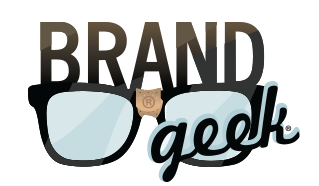Brandgeek proudly supports Mountain Area Preservation and is humbled to be…
Betty Boop’s Bubble Bursts
Betty Boop was created by Max Fleischer in 1930. Fleischer sold his rights in the Betty Boop cartoon and character to Paramount Pictures (Paramount) in 1941. In 2006, Fleischer’s heirs (through Fleischer Studios, Inc. (Fleischer)), filed suit in the United States District Court for the Central District of California against group of defendants that Fleischer alleged were infringing on the Betty Boop copyright and trademark. On August 10, 2009, the District Court dismissed the case, granting summary judgment to the defendants, along with an award of their costs of the action. Fleischer timely appealed to the 9th Circuit, which rendered its opinion upholding the District Court’s dismissal on Wednesday, February 23, 2011.
The 9th Circuit opinion initially states that the District Court found that Fleischer held neither a valid copyright nor a valid trademark in the Betty Boop cartoon character and thus lacked standing to sue. The 9th Circuit then took care to make clear that although the original Betty Boop copyright owner was an entity named Fleischer Studios, Inc., that is not the same entity as the Fleischer Studios, Inc. that filed the instant lawsuit (plaintiff Fleischer Studios (Fleischer) is an entity formed by Fleischer’s heirs in 1970 for the purpose of reviving his work).
Fleischer alleged that it owned a valid copyright in Betty Boop due to a series of assignments of the copyright in the work. Unfortunately for Fleischer it did not meet its burden of proof in demonstrating its claimed chain of title. The District Court found that the only proven chain of title was the 1941 transfer from Max Fleischer to Paramount and an alleged transfer back to Fleischer from defendant Republic Pictures (Republic) in 1997. Since there was no proof of any transfer to Republic, or any of the other intervening transfers that Fleischer claimed existed, the court found Fleischer’s chain of title to be defective, hence unenforceable.
Regarding Fleischer’s trademark claim, the District Court held that Fleischer submitted no evidence of a trademark registration for the Betty Boop image, though it had registered the word mark BETTY BOOP. (In fact, there are five BETTY BOOP U.S. federal trademark registrations, including this one for goods in thirteen separate International Classes, all jointly owned by Fleischer and Hearst Holdings, Inc.) The District Court dismissed Fleischer’s trademark claims, holding that Fleischer did not timely submit evidence of its ownership of common law trademark rights or any federal trademark registrations.
The 9th Circuit affirmed the dismissal of the trademark claims on an “alternate basis” (one not cited by the parties or the lower court), which is permissible so long as that basis is supported by the record. The 9th Circuit relied on a case called Job’s Daughters, about which it stated:
[framed_box]“In general,” Job’s Daughters stated, trademark law is concerned only with identification of the maker, sponsor, or endorser of the product so as to avoid confusing consumers. Trademark law does not prevent a person from copying so-called “functional” features of a product which constitute the actual benefit that the consumer wishes to purchase, as distinguished from an assurance that a particular entity made, sponsored, or endorsed a product
. . . . .
It is not uncommon for a name or emblem that serves in one context as a collective mark or trademark also to be merchandised for its own intrinsic utility to consumers. We commonly identify ourselves by displaying emblems expressing allegiances. Our jewelry, clothing, and cars are emblazoned with inscriptions showing the organizations we belong to, the schools we attend, the landmarks we have visited, the sports teams we support, the beverages we imbibe. Although these inscriptions frequently include names and emblems that are also used as collective marks or trademarks, it would be naive to conclude that the name or emblem is desired because consumers believe that the product somehow originated with or was sponsored by the organization the name or emblem signifies. (Internal cites omitted; emphases added).
[/framed_box]As in the Job’s Daughter’s case, the Court found that Defendant’s use of Betty Boop was not a trademark use; rather it was a functional and aesthetic use, which does not infringe upon trademark rights.
The Appeals Court also sua sponte cited the US Supreme Court case, Dastar Corp v. Twentieth Centurey Fox, which held that when a copyright is in the public domain, a party may not assert a trademark infringement action that essentially substitutes a trademark claim for the barred copyright claim. The 9th Circuit held that allowing Fleischer to assert a trademark claim over the image of Betty Boop essentially would prevent Betty Boop from ever entering the public domain.
As a side note, I cannot wait to see how Congress “fixes” the Dastar problem when the copyright in the world’s favorite mouse next is due to expire. The 9th Circuit should have included this image in its opinion, only instead of mouse ears, it should have a Boop profile! (Were I only skilled in graphic design) . . .
 Make sure to retain multiple copies (in different locations) of all transfer documents. Not every use of your brand by 3rd parties is an actionable infringing trademark use; consult counsel before firing off C&D letters or take other action against what you think *may* be an infringement.
Make sure to retain multiple copies (in different locations) of all transfer documents. Not every use of your brand by 3rd parties is an actionable infringing trademark use; consult counsel before firing off C&D letters or take other action against what you think *may* be an infringement.






In the complicated world we live in, it’s good to find simple solutions.